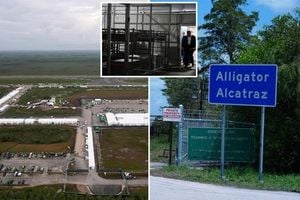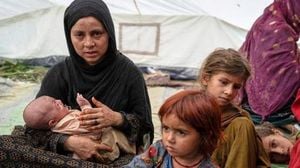California is currently grappling with the dual crises of a bird flu outbreak and contentious water management issues, the latter exacerbated by the state's challenging drought conditions. The highly pathogenic avian influenza (HPAI) has swept through poultry flocks, prompting urgent responses from federal and state officials.
According to reports from the United States Department of Agriculture (USDA), cases of HPAI have recently been identified across multiple states, including California, Ohio, and Indiana. The USDA's Animal and Plant Health Inspection Service (APHIS) confirmed several outbreaks, including commercial meat duck flocks and turkey flocks, which have alarmed the poultry industry. For example, just this past week, authorities confirmed the presence of HPAI among meat duck flocks involving over 150,000 birds across two California counties.
California's officials have expressed concerns about the impact of these outbreaks on local farmers and egg prices nationwide. The situation is particularly pressing as California is the nation’s top egg producer and any significant disruption could ripple through grocery supplies across the United States. Scientists and experts have emphasized the seriousness of HPAI, stating, "It’s still spreading, and not just among birds," which heightens fears of potential health risks to humans.
Yet the challenges faced by California farmers do not end with bird flu. The state has also been embroiled in heated disputes over water management, particularly against the backdrop of severe drought conditions. Recent directives from President Trump have ignited controversy, as he attempted to override state water policies, reportedly to aid agricultural interests amid what he described as "disaster response" needs.
The President's executive order directed federal authorities to bypass certain environmental protections aimed at endangered species, creating tensions between state and federal officials. A spokeswoman for California Governor Gavin Newsom criticized Trump’s actions, stating, "The actions ordered would primarily serve farms… have absolutely nothing to do with the local fire response." This reflects the broader complexity within which agriculture, environmental concerns, and federal policies intersect.
Trump's declaration has drawn skepticism from many quarters, especially when he claimed, via his social media platform, "The military...TURNED ON THE WATER." The state’s Department of Water Resources clarified, emphasizing the military had not entered California; rather, federal water pumps were simply restarted after maintenance.
This interplay of crises highlights the precarious position of California's agriculture, which relies heavily on both poultry production and water availability. Farmers are facing the brunt of these overlapping issues as they navigate the consequences of HPAI outbreaks alongside restrictive water measures.
The ramifications of the current bird flu outbreak are expansive, with estimates showing over 4 million chickens and turkeys already affected across the country. Ohio has emerged as the state with the most significant impacts, with multiple commercial poultry operations reporting severe losses. This uptick in avian influenza cases has not only raised concerns about animal health but also about rising egg prices during peak demand seasons.
With environmental and agricultural policies now being closely examined, experts argue on the need for more sustainable practices to manage both water resources and animal health effectively. The urgency of addressingsuch challenges is underscored by the fact both bird flu and water scarcity pose risks, not just to agricultural producers but also to consumers awaiting essentials at grocery stores.
This convergence of water politics and agricultural disease management paints a stark picture of California’s current agricultural climate. Solutions need to prioritize both the immediate impacts of the HPAI outbreaks and the long-term sustainability issues raised by intense drought conditions.



